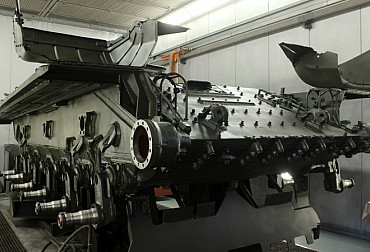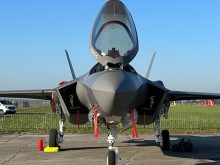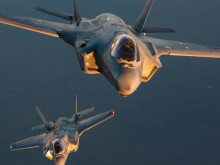The past year 2022 was a turning point in the modernisation of the Slovak Army. The Army of the Czech Republic is also gradually modernizing
The past year was one of the most challenging in the history of the Slovak Armed Forces. In addition to fighting the receding coronavirus pandemic, Slovak soldiers were primarily involved in fulfilling their main task, which is to ensure the defence of the Slovak Republic and its population in the context of Russian aggression in Ukraine.
"The most valuable thing the armed forces have and what the Slovak Republic has in terms of maintaining its defence capability are our members. Professionalism, loyalty to the state, the ability to sacrifice themselves for the benefit of national interests and for the benefit of the citizens of our country, this is the highest quality of the armed forces. This has been proven in the last three years, when members of the Slovak Armed Forces were willing and able to do everything that the citizens of the Slovak Republic needed and expected from them in connection with dealing with crisis situations," said recently the Chief of the General Staff of the Slovak Armed Forces, General Daniel Zmeko.
 Picture: Chief of the General Staff of the Slovak Armed Forces General Daniel Zmeko | Ministry of Defence of the Slovak Republic
Picture: Chief of the General Staff of the Slovak Armed Forces General Daniel Zmeko | Ministry of Defence of the Slovak Republic
He also noted that in order to ensure quality conditions for the service of professional soldiers, it is necessary to maintain the pace of investments in the modernisation of armaments and equipment and infrastructure repairs. General Zmeko stressed that the current modernisation projects are fully in line with the established requirements for the fulfilment of allied commitments and reflect the requirements for the overall readiness of the Armed Forces. "We have made important strategic decisions within the ground forces. Contracts for the basic modernisation of the ground forces have now been signed. This primarily means new combat vehicles, both wheeled and tracked. I believe that in the near future we will take a decision on the purchase of a main battle tank. I see this as us finally catching our breath. At the same time, today we are renovating the barracks that should have been sold some time ago. Not to mention how many barracks and training facilities have been sold and how much we miss them. In addition, there has been little investment in the infrastructure we have left for a long time. We have thus created a multi-billion dollar investment debt. Thanks to good decisions by the current leadership of the Ministry, some projects are finally being implemented. However, the infrastructure problem will accompany us for at least another decade," General Zmeko noted.
Referring to the challenges arising from the war in Ukraine, the General said that the armed forces are in relatively good shape and, most importantly, have good and ready personnel. "In response to the war in Ukraine, we have been carrying out a huge number of tasks for a long time. Those that are generally known from the beginning and those that are talked about gradually. And we are performing these tasks excellently. From the immediate coverage of the state border, to assisting the police forces, to other challenges. The fact that we have not yet experienced any problems in professionalism, but also in morale and discipline, is one of the images of our strength and resilience," General Zmeko added.
The assistance provided to the defenders of Ukraine, whether material or training, has not had a direct impact on the defence capability of the Slovak Republic. In total, more than 600 Ukrainian soldiers participated in the training. At the same time, they were involved in ensuring the transport of more than 11 500 tonnes of military material from the stocks of the Slovak Armed Forces and from other countries, which flowed through the territory of the Slovak Republic to Ukraine.
The Army of the Czech Republic is also gradually modernising
The Ministry of Defence of the Czech Republic currently has several major modernisation projects on the table. At the end of last year, Minister Černochová reminded that in October 2023 she would inform the government about the outcome of negotiations with the US on the possible purchase of F-35 aircraft. She noted that all options for the modernisation of the air force are still in play, but the defence ministry is trying to negotiate intensively for a purchase from the United States.
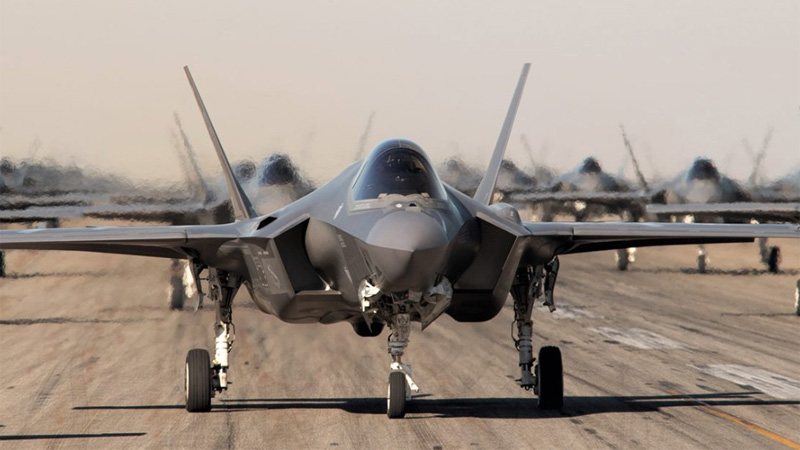 Picture: Minister Černochová will inform the government in October 2023 about the outcome of negotiations with the US on the possible purchase of F-35 aircraft (pictured). | Lockheed Martin
Picture: Minister Černochová will inform the government in October 2023 about the outcome of negotiations with the US on the possible purchase of F-35 aircraft (pictured). | Lockheed Martin
Another major purchase will be the acquisition of 210 CV90 MkIV tracked infantry fighting vehicles from Sweden. According to the minister, the negotiations are progressing well and the ministry could report on the results within weeks. According to Černochová, while it is not realistic to acquire all the new vehicles by 2026, at least the first units should be in the equipment of the 7th Mechanised Brigade by then.
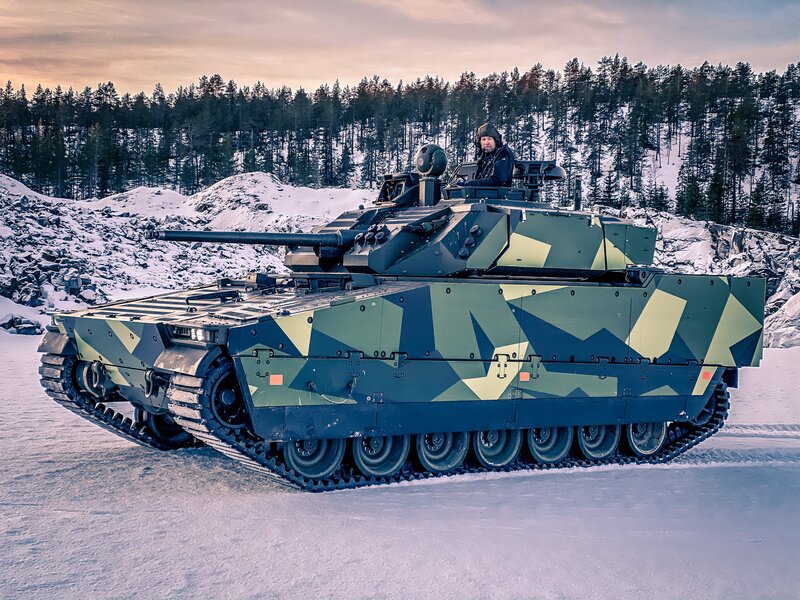 Picture: Another major purchase will be the acquisition of 210 CV90 MkIV tracked infantry fighting vehicles (pictured) from Sweden. According to the minister, negotiations are progressing well and the department could report on the results within weeks | BAE Systems
Picture: Another major purchase will be the acquisition of 210 CV90 MkIV tracked infantry fighting vehicles (pictured) from Sweden. According to the minister, negotiations are progressing well and the department could report on the results within weeks | BAE Systems
This year, the army will also receive US H1 helicopters, with the UH-1Y Venom multi-role machines and AH-1Z Viper fighters replacing the Mi-35/24V fighters in the Czech Army's arsenal. According to the schedule, the arrival of the first US helicopters is expected in the first quarter of this year.
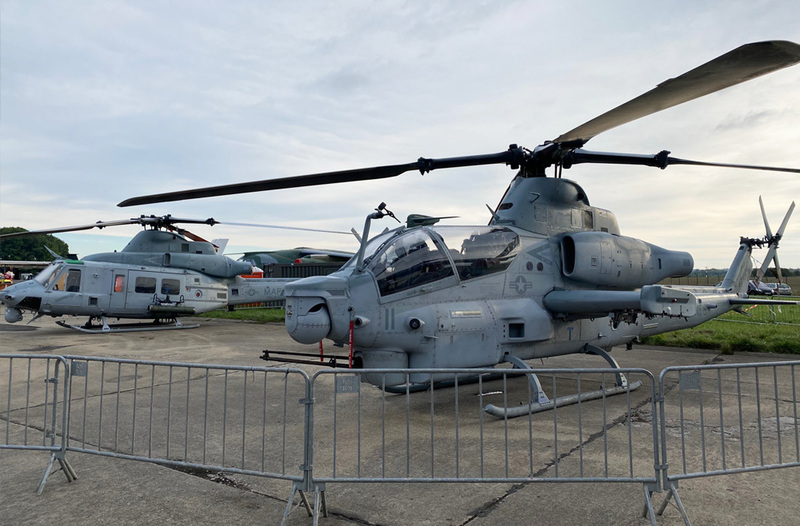 Picture: Czech Army to receive H1 helicopters this year | Michal Pivoňka / CZ DEFENCE
Picture: Czech Army to receive H1 helicopters this year | Michal Pivoňka / CZ DEFENCE
The Ministry is also trying to accelerate the purchase of new and modernisation of existing Pandur II 8x8 armoured wheeled personnel carriers for the 4th Rapid Deployment Brigade. As far as the actual modernisation process is concerned, according to Deputy Minister Koudelka, it is dependent on the so-called feasibility study, which should have been commissioned by the end of last year, with its completion expected by June 2023. According to Koudelka, the terms of reference for the study are still being drawn up. "It should be remembered that this is actually the purchase of 68 new vehicles and the modernisation of 107," Koudelka said at last October's Defence Committee meeting.
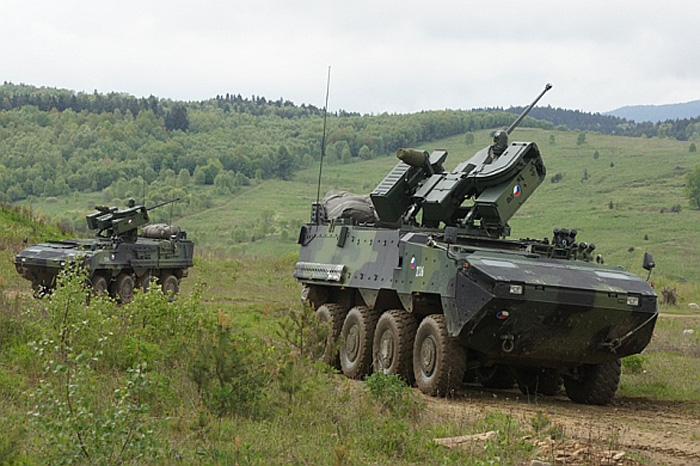
Picture: Pandur II 8x8 infantry fighting vehicles | Ministry of Defence of the Czech Republic
In the second half of last year, the 7th Mechanised Brigade also carried out military trials of TITUS wheeled armoured vehicles, in command and staff, liaison and fire support coordination site versions. This is the key equipment that will be delivered to the brigade and other units of the Czech Armed Forces supporting the Brigade Task Force (BTF) starting this year.
 Picture: TITUS armoured vehicle for the Czech Armed Forces | Michal Pivoňka / CZ DEFENCE
Picture: TITUS armoured vehicle for the Czech Armed Forces | Michal Pivoňka / CZ DEFENCE
Another new addition to the Czech Army's military equipment portfolio will be a highly specialised vehicle – the STARKOM (STAvebnicový Rušič KOMunikační) jammer on a Tatra Force (815-7) 8x8 chassis with all steerable axles. At the end of 2019, the Ministry of Defence of the Czech Republic signed a contract for the purchase of a total of 8 of these vehicles, which should replace the old MORUŠ (MOdulová stavebnice RUŠičů) jammers. The new vehicles will be intended for deployment in the frontline combat units, therefore a high degree of ballistic protection (cab and superstructure) is required. The special equipment of this vehicle includes, for example, a protective jammer against radio-launched explosive devices, powerful communication technologies for communication and data processing, filter ventilation, mobile camouflage, and a 360° camera system.
 Picture: Specialized STARKOM vehicle for the Czech Armed Forces | Michal Pivoňka / CZ DEFENCE
Picture: Specialized STARKOM vehicle for the Czech Armed Forces | Michal Pivoňka / CZ DEFENCE
Within the 7th Mechanised Brigade, the delivery of Leopard 2 A4 tanks is underway, with the first of these vehicles already taken over by the unit in Přáslavice on 21 December 2022. The remaining 13 battle tanks should arrive in Přáslavice by the end of this year. The recovery vehicle should then be ready by mid-2024. The fully operational machines were originally used by the Swiss and German armies.
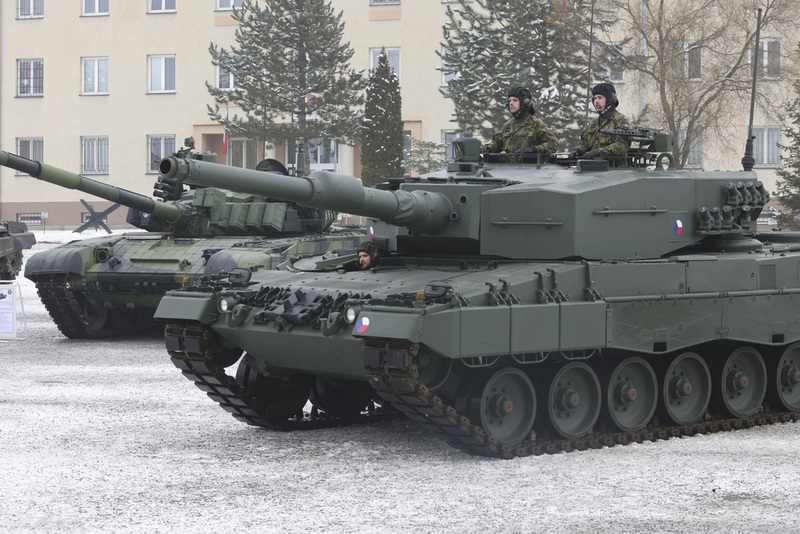 Picture: Leopard 2 A4 with T-72M4 CZ tank in the background | Tomáš Novák
Picture: Leopard 2 A4 with T-72M4 CZ tank in the background | Tomáš Novák
In addition to the donated tanks, a study is currently being carried out to evaluate the technical specifications related to the future purchase of additional new tanks, which will determine, among other things, the way forward.















